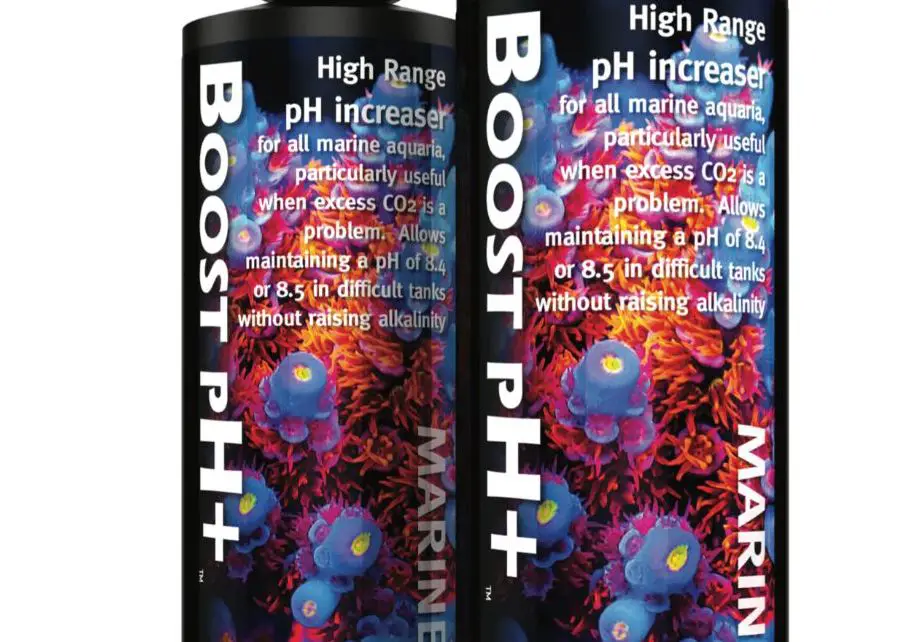Originally posted on May 20, 2023 @ 4:00 pm
Last Updated on 2 months by admin
Keeping a healthy environment for your aquatic pets is crucial, and maintaining the right balance of pH and alkalinity is a crucial aspect of it. If you’re struggling to keep your aquarium’s alkalinity levels up without raising the pH, you’re in the right place. In this article, we’ll discuss some effective ways to raise alkalinity without compromising the pH levels of your aquarium.
Raising alkalinity without raising pH levels is a bit tricky, but not impossible. It requires careful planning, monitoring, and implementing the right techniques. Whether you’re a beginner or a seasoned aquarium enthusiast, our tips and tricks will help you achieve the perfect balance of alkalinity and pH in your aquarium, ensuring a healthy environment for your aquatic pets to thrive in.
One way to raise alkalinity without raising pH in an aquarium is by adding baking soda. Dissolve 1 teaspoon of baking soda per 5 gallons of water and add it to your aquarium. Another option is to use a commercial alkalinity booster that contains sodium bicarbonate and other alkaline compounds. Test the water regularly to ensure that the alkalinity levels are stable.

How to Raise Alkalinity Without Raising pH Aquarium?
Maintaining the right balance in your aquarium is crucial for the health of your fish and other aquatic life. One important aspect of this balance is the alkalinity and pH levels of the water. While high alkalinity levels are essential for a healthy aquarium, raising the pH levels too much can be harmful to the aquatic life. So, how can you raise alkalinity without raising pH in your aquarium?
Understanding the Importance of Alkalinity and pH Levels
Alkalinity and pH levels are two different parameters that are often confused with each other. Alkalinity refers to the ability of the water to resist changes in pH levels, while pH refers to the acidity or basicity of the water. Both are important for the health of your aquarium, but maintaining the right balance between them is crucial.
A low alkalinity level can lead to pH fluctuations, which can be harmful to the aquatic life in your aquarium. On the other hand, a high pH level can cause stress and other health problems for your fish and other aquatic life. Therefore, it is important to maintain the right balance between alkalinity and pH levels in your aquarium.
Methods to Raise Alkalinity Without Raising pH
Here are some methods you can use to raise alkalinity without raising pH in your aquarium:
- Adding Baking Soda: Baking soda is a common household item that can be used to raise alkalinity levels in your aquarium. Simply dissolve a teaspoon of baking soda in a cup of water and add it to your aquarium. Repeat this process until you achieve the desired alkalinity level. However, be careful not to add too much baking soda, as it can raise the pH levels as well.
- Using a Calcium Reactor: A calcium reactor is a device that can be used to raise alkalinity levels in your aquarium. It works by dissolving calcium carbonate media in a chamber, which releases calcium and alkalinity into the water. This method is more expensive than using baking soda, but it is more effective and doesn’t raise pH levels.
- Adding Dolomite: Dolomite is a type of rock that is rich in calcium and magnesium. Adding dolomite to your aquarium can help raise alkalinity levels without raising pH. Simply add a small amount of dolomite to your aquarium filter or substrate, and it will slowly release calcium and magnesium into the water.
The Benefits of Raising Alkalinity Without Raising pH
By maintaining the right balance between alkalinity and pH levels in your aquarium, you can ensure the health and well-being of your fish and other aquatic life. Raising alkalinity levels without raising pH can help prevent pH fluctuations, which can be harmful to your aquatic pets. It can also promote healthy growth and reproduction of your fish and other aquatic life.
Alkalinity vs. pH: What’s the Difference?
Alkalinity and pH are often confused with each other, but they are two different parameters that are important for the health of your aquarium. Alkalinity refers to the ability of the water to resist changes in pH levels, while pH refers to the acidity or basicity of the water.
Maintaining the right balance between alkalinity and pH levels in your aquarium is crucial. A low alkalinity level can lead to pH fluctuations, which can be harmful to your aquatic pets. On the other hand, a high pH level can cause stress and other health problems for your fish and other aquatic life. Therefore, it is important to monitor and maintain both alkalinity and pH levels in your aquarium.
The Bottom Line
In summary, raising alkalinity levels without raising pH in your aquarium is important for the health and well-being of your fish and other aquatic life. By using methods such as adding baking soda, using a calcium reactor, or adding dolomite, you can raise alkalinity levels without raising pH. Remember to monitor and maintain both alkalinity and pH levels in your aquarium to ensure a healthy and balanced environment for your aquatic pets.
Frequently Asked Questions
Here are some commonly asked questions about how to raise alkalinity without raising pH in an aquarium:
What is alkalinity in an aquarium and why is it important?
Alkalinity is a measure of the water’s ability to resist changes in pH. It is important to maintain alkalinity as it helps stabilize pH levels in the aquarium, which is crucial for the health of fish and other aquatic organisms. Low alkalinity can cause pH to fluctuate and become too acidic or basic, which can be harmful to aquatic life.
Alkalinity is typically measured in carbonate hardness (KH) or parts per million (ppm). The ideal range for aquarium alkalinity is between 120-180 ppm.
How can I raise alkalinity in my aquarium without raising pH?
One way to raise alkalinity without affecting pH is to add a buffer solution specifically designed for this purpose. These buffers contain bicarbonate and carbonate ions, which can increase alkalinity without affecting pH. Another option is to add crushed coral or aragonite substrate to the aquarium. These materials release calcium and carbonate ions into the water, which can help raise alkalinity.
It’s important to note that raising alkalinity too quickly can still affect pH levels, so it’s best to do so gradually over several days or weeks while monitoring pH levels closely.
Can I use baking soda to raise alkalinity in my aquarium?
Yes, baking soda (sodium bicarbonate) can be used to raise alkalinity in an aquarium. However, it’s important to use caution and measure the amount carefully as adding too much can quickly raise pH levels as well. A general rule of thumb is to add no more than 1 teaspoon of baking soda per 5 gallons of water, and to test and adjust pH levels accordingly.
It’s also important to note that baking soda should not be used as a long-term solution for alkalinity maintenance, as it can lead to a buildup of sodium ions in the water over time.
What are some other ways to maintain alkalinity in an aquarium?
Regular water changes can help maintain alkalinity levels in an aquarium, as fresh water often has higher alkalinity levels than aquarium water. Adding live rock or live sand to the aquarium can also help maintain alkalinity by providing a natural source of calcium and carbonate ions.
Additionally, monitoring and adjusting pH levels, avoiding overfeeding and overstocking, and using a protein skimmer to remove organic waste can all help maintain a stable alkalinity level in the aquarium.
What are the risks of low alkalinity in an aquarium?
Low alkalinity in an aquarium can lead to unstable pH levels, which can be harmful to fish and other aquatic life. Fluctuating pH levels can cause stress and disease in fish, and can also lead to issues with coral growth and other invertebrates.
In extreme cases, low alkalinity can lead to a pH crash, where pH levels drop rapidly and can become lethal to fish and other organisms. Maintaining proper alkalinity levels is essential for the overall health and longevity of an aquarium.

How to boost alkalinity in your water without raising the p.H with Dutchman420
In conclusion, raising alkalinity without raising pH in your aquarium is crucial for the health and well-being of your aquatic pets. By following a few simple steps, you can easily achieve the optimal alkalinity levels needed to maintain a healthy aquatic environment.
Firstly, testing your water regularly is essential to ensure the alkalinity levels are within the recommended range. Secondly, adding alkaline buffers such as baking soda or crushed coral can help maintain alkalinity levels without raising pH. Lastly, maintaining proper water circulation and ensuring proper filtration can also assist in keeping alkalinity levels stable.
Overall, by following these simple steps, you can create a healthy and thriving aquatic environment for your pets while maintaining optimal alkalinity levels. Remember to always monitor and test your water regularly to ensure the best possible conditions for your aquatic pets.
